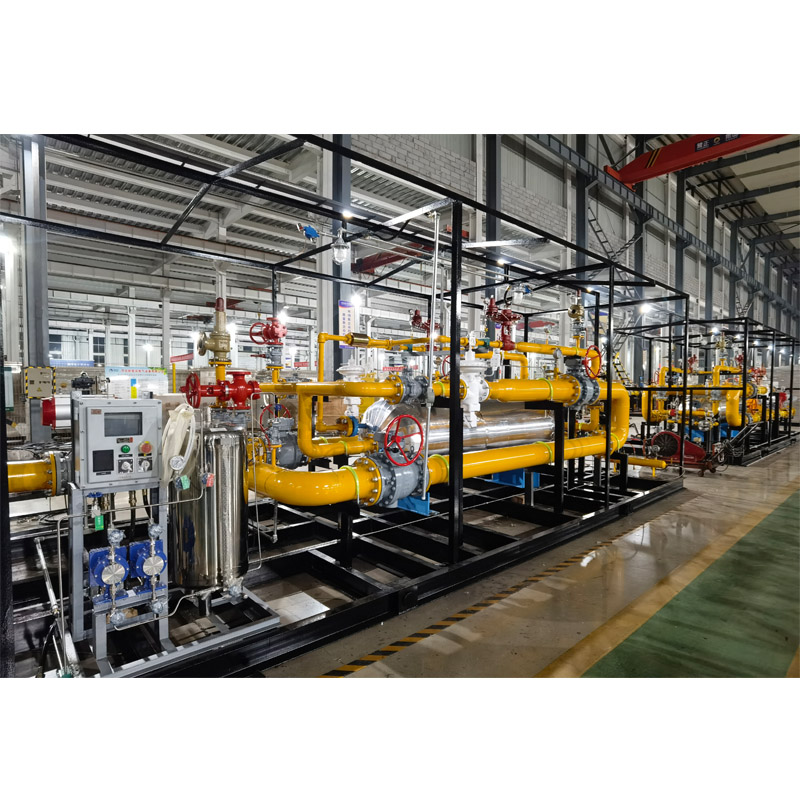
Nov . 05, 2024 21:04
Back to list
pressure reduction skid
Understanding Pressure Reduction Skids Essential Components in Industrial Processes
Pressure reduction skids are critical components in various industrial applications, particularly in the oil and gas, chemical, and utility sectors. These skids serve to manage and regulate the pressure of gases or liquids in pipelines, ensuring safe and efficient operations. In this article, we will explore the principles behind pressure reduction skids, their design, functionality, and the benefits they bring to industrial processes.
What is a Pressure Reduction Skid?
A pressure reduction skid is a packaged system used to reduce and control the pressure of fluids. The skid typically includes valves, pressure regulators, instrumentation, and safety devices, all mounted on a structural frame. The entire assembly is pre-engineered, fabricated, and tested as a complete unit, making it easy to deploy in the field.
The primary function of a pressure reduction skid is to ensure that the pressure of the fluid is maintained at a specific level downstream, allowing the downstream equipment to operate safely and efficiently. This is particularly important in processes where pressure fluctuations can lead to equipment damage, operational inefficiencies, or safety hazards.
How Does a Pressure Reduction Skid Work?
The operation of a pressure reduction skid begins with the incoming high-pressure fluid being directed into the skid. A series of valves and regulators monitor and adjust the pressure.
1. Pressure Regulation At the heart of the skid is the pressure regulator, which automatically adjusts the opening in response to changes in downstream pressure. As the fluid flows through, the regulator maintains a consistent output pressure by modulating the flow rate.
2. Safety Features Safety is paramount in industrial operations. Most pressure reduction skids come equipped with safety relief valves that can open to vent excess pressure, preventing potential overpressure situations. Additionally, pressure and temperature sensors provide real-time monitoring, sending alerts if any anomalies are detected.
3. Control Systems Advanced skids may also incorporate control systems that automate the pressure management process. These systems can include programmable logic controllers (PLCs) that provide data logging, remote monitoring, and integration with other process controls.
Design Considerations
pressure reduction skid

Designing a pressure reduction skid involves understanding the specific requirements of the application. Key factors include
- Fluid Characteristics The type of fluid (gas, liquid, or vapor) and its properties (viscosity, temperature, etc.) will influence the selection of components and the design of the skid. - Operational Environment The environment where the skid will operate—such as temperature extremes, space availability, and exposure to corrosive substances—dictates material choices and protective measures. - Flow Rate Needs The maximum and minimum flow rates required by the downstream process help determine the sizing of the components within the skid.
Benefits of Using Pressure Reduction Skids
1. Safety By precisely controlling the pressure of fluids, reduction skids minimize the risk of accidents caused by overpressure, leaks, or ruptures.
2. Efficiency Skids optimize the operation of downstream equipment, which can lead to lower energy consumption and reduced maintenance costs.
3. Space-saving The modular design of skids allows for compact installation, which is particularly beneficial in environments where space is at a premium.
4. Ease of Installation A pre-assembled skid can be installed quickly and seamlessly, reducing downtime during the commissioning of new projects or retrofitting existing systems.
5. Customizability Skids can be tailored to meet specific process requirements, including varying pressures and flow rates, making them versatile solutions for a range of industrial applications.
Conclusion
Pressure reduction skids are indispensable in managing fluid pressures within industrial settings. Their ability to regulate pressure and enhance safety and efficiency makes them vital for numerous applications across various sectors. By understanding the functionality and benefits of these skids, industries can better appreciate their role in ensuring safe and optimized operations. As technology continues to advance, we can expect even more innovations in pressure reduction systems, further enhancing performance and reliability in the field.
Next:
Latest news
-
Safety Valve Spring-Loaded Design Overpressure ProtectionNewsJul.25,2025
-
Precision Voltage Regulator AC5 Accuracy Grade PerformanceNewsJul.25,2025
-
Natural Gas Pressure Regulating Skid Industrial Pipeline ApplicationsNewsJul.25,2025
-
Natural Gas Filter Stainless Steel Mesh Element DesignNewsJul.25,2025
-
Gas Pressure Regulator Valve Direct-Acting Spring-Loaded DesignNewsJul.25,2025
-
Decompression Equipment Multi-Stage Heat Exchange System DesignNewsJul.25,2025

